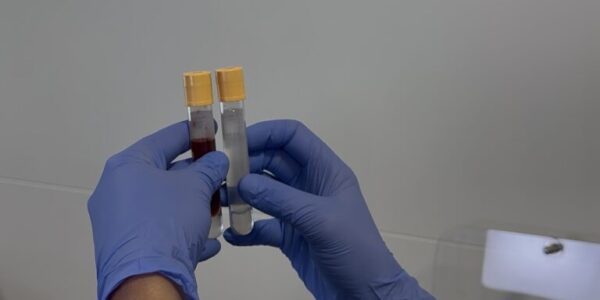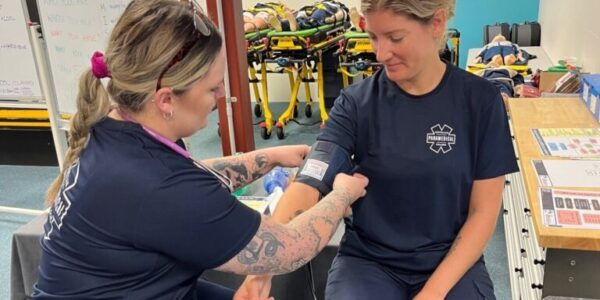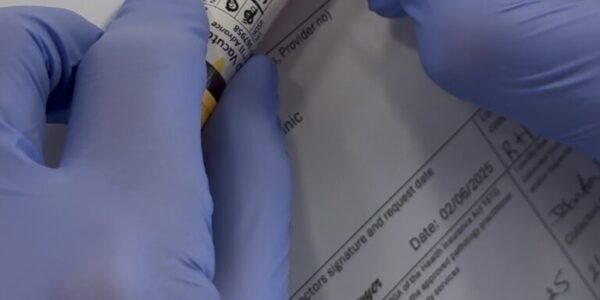Every day, thousands of Australians visit hospitals, clinics, and pathology centres to have blood tests and other samples collected. But have you ever thought about the skilled professionals who make this process possible? Pathology collectors play a crucial role in healthcare, ensuring accurate samples are taken, handled, and delivered to laboratories for testing.
If you’re looking for a hands-on healthcare role that doesn’t require years of study but still makes a real impact, pathology collection could be the perfect fit. It’s a career that offers job security, career growth, and the chance to work directly with patients, but it’s not without its challenges. So, how do you know if it’s the right career for you? Let’s take a closer look at what a pathology collector does and the skills needed to succeed in this role.
What Exactly Does a Pathology Collector Do?
A pathology collector, also known as a phlebotomist, is responsible for collecting blood, urine, and tissue samples from patients for laboratory analysis. These samples help diagnose and monitor medical conditions, from infections and allergies to chronic diseases like diabetes and cancer.
Key Responsibilities:
Perform blood collection (venepuncture), safely draw blood from patients using needles and collection tubes.
Collect other biological samples, this may include swabs, urine, or tissue samples depending on the test requirements.
Ensure proper labelling and handling, each sample must be accurately labelled and stored to maintain integrity before testing.
Reassure and support patients, some individuals may feel anxious about blood tests, so pathology collectors must help them feel at ease.
Following strict health and safety protocols, infection control, hygiene, and correct disposal of used equipment are critical to maintaining safety standards.
Work across various healthcare settings, pathology collectors may work in hospitals, GP clinics, specialist pathology centres, or mobile collection services.
If you’re interested in learning more about the overall field of pathology and the role it plays in healthcare, check out our in-depth guide: What is Pathology?
Why Choose a Career in Pathology Collection?
Pathology collection is a stable and rewarding career within the healthcare industry, offering strong job security and increasing demand for skilled professionals. With millions of pathology tests conducted across Australia each year, trained pathology collectors play a critical role in diagnosing and monitoring medical conditions.
One of the biggest advantages of this career is the short training period. Unlike many healthcare roles that require years of study, you can become qualified in as little as 6-12 months with a Certificate III in Pathology Collection (HLT37215). This makes it an accessible entry point into healthcare for those looking to start a career without committing to lengthy university studies.
Pathology collectors also benefit from diverse work environments, with opportunities in hospitals, private pathology labs, GP clinics, aged care facilities, and mobile collection services. The role offers a competitive salary, with Seek reporting an average annual salary of $60,000 to $70,000 for pathology collectors in Australia as of March 1, 2025 (Source: Seek).
Additionally, this career can serve as a stepping stone to other healthcare roles, including laboratory technician positions or further studies in medical science.
For those who enjoy working with people, have strong attention to detail, and want a hands-on healthcare role, pathology collection provides a meaningful and fulfilling career path.
What Qualities Are Needed to Be a Pathology Collector?
Pathology collectors need a mix of technical skills, attention to detail, and strong interpersonal abilities. Here are the key qualities that help professionals succeed in this role.
Attention to Detail
Accuracy in collecting, labelling, and handling specimens is essential to ensure correct test results and prevent errors.
Good Communication
Explaining procedures and reassuring patients, especially those nervous about needles, helps create a positive experience.
Compassion and Patience
Working with a diverse range of patients, including children and those with medical anxiety, requires a calm and empathetic approach.
Steady Hands
Performing venepuncture and handling delicate samples requires good hand-eye coordination and precision.
Efficiency Under Pressure
Hospitals and clinics can be fast-paced environments, so pathology collectors must work quickly without compromising accuracy.
Health and Safety Awareness
Strict infection control and hygiene protocols must always be followed when handling biological samples.
Professionalism and Confidentiality
Dealing with sensitive patient information requires discretion and a strong understanding of privacy laws.
Challenges of Being a Pathology Collector
While pathology collection is a rewarding career, it comes with challenges. Collectors often work with nervous patients who may have a fear of needles, requiring patience and reassurance. The job involves repetitive tasks and working in fast-paced environments, especially in busy hospitals and clinics. Strict safety protocols must be followed to prevent exposure to biohazards, and some roles require early starts or shift work. Despite these challenges, many find the role fulfilling, knowing the role they play in patient health.
Starting a Career in Pathology Collection
Becoming a pathology collector is a straightforward pathway into the healthcare industry. The first step is completing a Certificate III in Pathology Collection (HLT37215), which includes both theoretical study and practical training in blood collection, infection control, and patient care. Most courses take 6-12 months to complete and often include clinical placements to gain hands-on experience.
Once qualified, pathology collectors can find work in hospitals, GP clinics, pathology labs, and mobile collection services. Employers typically look for candidates with strong attention to detail, good communication skills, and the ability to work efficiently in a structured healthcare setting.
For those looking to advance their careers, pathology collection can be a stepping stone to other healthcare roles, such as laboratory technician positions or further studies in medical science.


